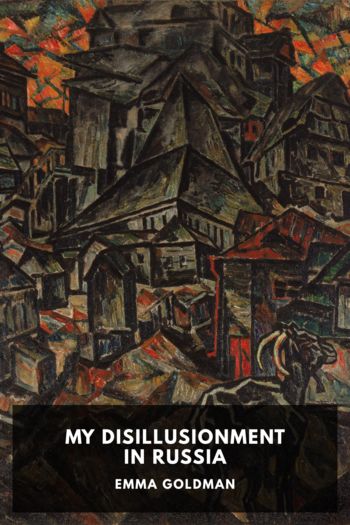Journey from St. Petersburg to Moscow Irina Reyfman (snow like ashes .TXT) 📖

- Author: Irina Reyfman
Book online «Journey from St. Petersburg to Moscow Irina Reyfman (snow like ashes .TXT) 📖». Author Irina Reyfman
Traditional readings of Radishchev’s book have seen it largely as a damning satire, a critique of serfdom and the serf economy, and there is no denying the force with which it exposes all sorts of social ills and evils that arise from abuses of power. These range from corporal punishment and the corruption of the judicial system to sexual exploitation and bribe taking. Far from blaming Catherine for all these ills, Radishchev focuses attention on the newly ennobled—small landowners who advanced up the social ladder through service to the state in the reigns of monarchs from Peter to Catherine II. But Radishchev’s fall from grace was arguably more a story of aspirations disappointed than tyranny opposed: he was not an advocate of revolution and preferred reform, even hoping that Catherine would take to heart his advice on renovating Russian laws to address human exploitation, economic and often sexual. For all his use of sad stories to illustrate the types of exploitation brought about by fundamental inequalities of class, economic situation, and gender, Radishchev keeps alive a more positive undercurrent. In two chapters bearing the subtitle “Project for the Future,” he imagines the promise of a virtuous monarch and state. Radishchev employs here one of his favorite words, a term that is hard to translate: blazhenstvo. Meaning “bliss,” “prosperity,” “the common good,” and “felicity,” and distinct from “good fortune” (schastie), it comes up time and again as a reminder that the human condition has the potential for much happiness when social conditions are reasonable. Late in life, Radishchev became a reader of Condorcet, a great advocate of the rationalist reform of society, whose belief in gender equality and the progress of the human spirit he seems to have shared. The optimism of his century may have been one reason for a critique of Russia born of aspirations for improvement. In 1790, after serving under a monarch who had enshrined social reforms in several important legislative packages, Radishchev hoped for more, and the Journey can be read as his attempt to synthesize in one complex literary work a lifetime spent in various forms of study—of natural and comparative law, the laws of the Russian Empire, and systems of taxation, as well as natural philosophy, as science was called in the eighteenth century.
TRANSLATING THE JOURNEY
Until the eighteenth century, the written form of the Russian language derived strongly from the ecclesiastical Church Slavonic. The rise of a secular literature accompanied the development of a new vernacular idiom marked by a more modern vocabulary, conversational tone, and varied patterns of syntax. While Radishchev can be an effective storyteller, he did not adopt for the Journey the newer style that had become the norm in Russia in the 1790s, famously crafted by the other great prose writer of the age, Nikolai Karamzin (1766–1826). On the contrary, for his Journey, Radishchev developed an artificially archaic and difficult style, not only using and overusing existing Church Slavonic forms but also creating his own “Slavonicized” expressions. This linguistic oddity has occasioned much comment and criticism, and even native Russians find the laborious syntax, neologisms, and pseudo-Slavonic register a challenge.
The only English translation of Radishchev’s 1790 travelogue was published by Harvard University Press in 1958. Two translators worked on it: first Leo Wiener (1862–1939), who died before publishing his translation; and then Roderick Page Thaler, who edited Wiener’s translation and supplied it with an introduction, notes, and index. As Thaler informs the reader in his preface, the Harvard historian Michael Karpovich served as his chief consultant during this work. Thaler labeled Radishchev a poor prose writer, seeing the style of his Journey as monotonous, repetitive, uneven, awkward, and often old-fashioned against Karamzin as a benchmark. Such a characterization indicates that Thaler (and, most probably, the original translator Leo Wiener as well) never suspected that Radishchev’s idiosyncratic writing was a consciously created stylistic device, part of his design to make his travelogue effective as a literary work.
All readers of the Journey know that it is a difficult read. Anyone who has looked at other writings by Radishchev will have seen ample counterevidence that he was also entirely able to write clear prose. The question is why Radishchev devised a style designed to make the reader work hard at the meaning. Many passages in the Journey are not simply outdated (as Thaler believed) but artificially archaic, as has been demonstrated by a number of scholars who have examined Radishchev’s linguistic choices. The fact that some chapters of Radishchev’s book are written in a language that does not present any difficulties to the reader, while others are almost beyond comprehension—so difficult are their word choice, grammar, and syntax—indicates that Radishchev intentionally changed the degree of difficulty to influence his readers in a certain way. It is significant, for example, that the most linguistically obscure chapters and passages usually present the most provocative ideas. Finally, as has been pointed out by historians of the





Comments (0)